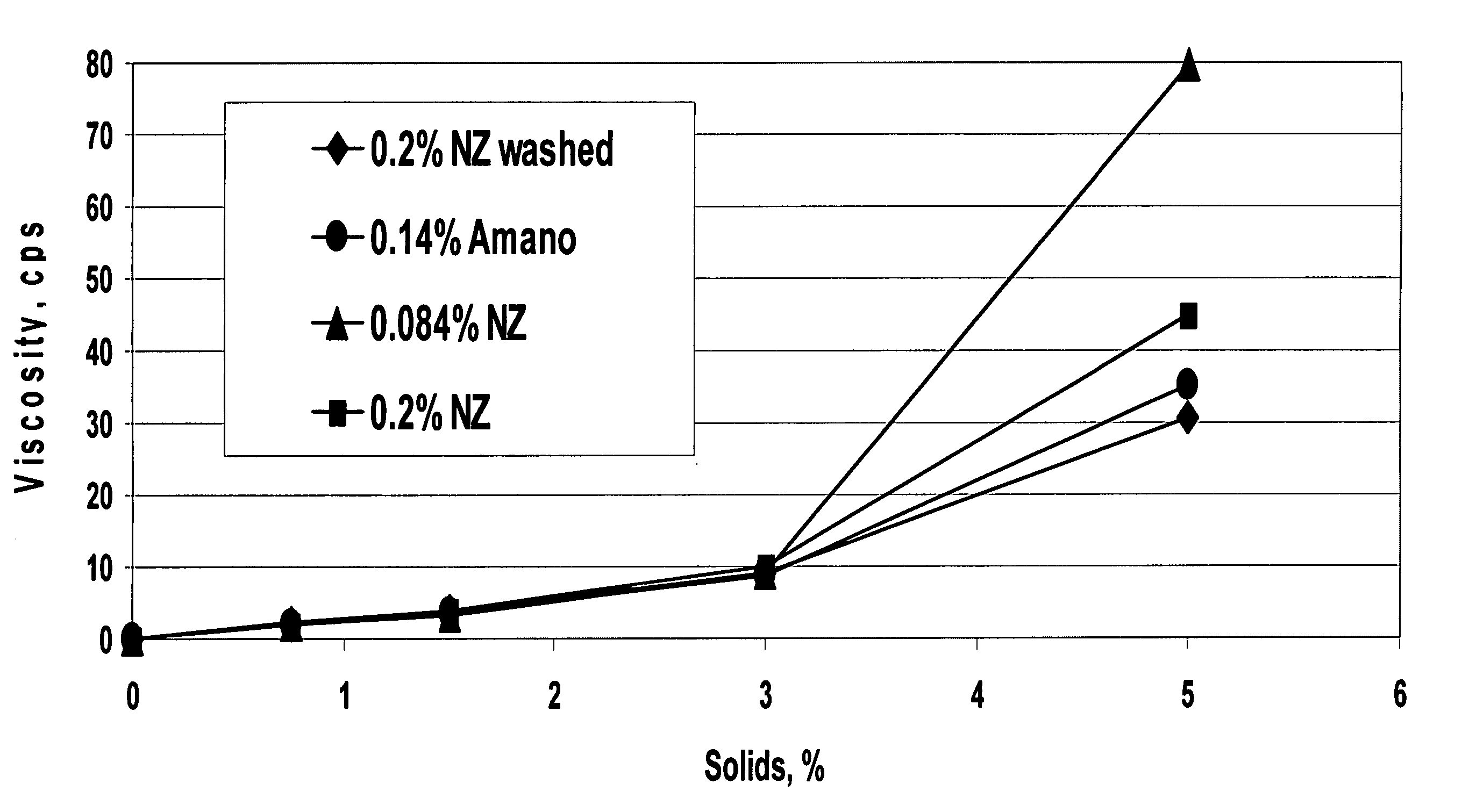Acidic, protein-containing drinks with improved sensory and functional characteristics
- Summary
- Abstract
- Description
- Claims
- Application Information
AI Technical Summary
Benefits of technology
Problems solved by technology
Method used
Image
Examples
example 1
[0172] In this Example, an acidic, protein-containing drink produced using a process of the present invention and a control sample using a conventional process are prepared. The viscosities of the samples are then analyzed and compared.
[0173] To produce the sample using a process of the present invention (Sample A), a mixture of 32.0 grams ascorbic acid, 56.0 grams anhydrous citric acid, and 20.0 grams phosphoric acid (85%) is added to 656.0 grams apple juice concentrate (available from San Joaquin Valley, Fresno, Calif.) producing an acidic beverage having a pH of 2.5. To the acidic beverage, 22,563.2 grams of water is added. 560.0 grams Alpha™ 5812, a commercially available soy protein concentrate (available from The Solae Company, St. Louis, Mo.), is then hydrated in the acidic beverage for 5 minutes with continuous stirring. After the Alpha™ 5812 is sufficiently hydrated to form an acidic, protein-containing solution, 4.503 grams of Novozymes phytase (Batch NS37032 available fr...
example 2
[0176] In this example, three samples of acidic, protein-containing drinks according to processes of the present invention and two control samples using a conventional process of producing an acidic, protein-containing drink are prepared. The hardness of sediment values (i.e., shake back times) for the samples are analyzed and compared to determine whether the sediment is hard pack or soft pack.
[0177] To produce the three different samples of acidic, protein-containing drink according to processes of the present invention, a mixture of 32.0 grams ascorbic acid, 56.0 grams anhydrous citric acid, and 20.0 grams phosphoric acid (85%) is added to 656.0 grams apple juice concentrate producing an acidic beverage having a pH of 2.5. To the acidic beverage, 22,563.2 grams of water is added. Various amounts (see Table 1) of Alpha™ 5812, a commercially available soy protein concentrate (available from The Solae Company, St. Louis, Mo.), are then hydrated in the acidic beverage for 5 minutes ...
example 3
[0184] In this Example, soy protein isolates that have been treated with a phytic acid degrading enzyme during processing are produced.
[0185] To obtain the soy protein isolates, identity preserved (IP) defatted soy flakes (10 lbs / min) are extracted at a water temperature of 92° F. (33° C.) and at a pH of about 9.86 using lime and a water to flake ratio of 10:1. The extractant is then separated from the spent flakes via centrifugation at a speed of 4000 revolutions per minute (rpm). A second extraction is subsequently performed on the recovered flakes using a water to flake ratio of 6:1 at a water temperature of 92° F. (33° C.), followed by a second separation via centrifugation at a speed of 4000 rpm and a pH of about 9.77. The two extracts are combined to form a combined extract having a pH of about 9.95. The combined extract is further clarified by washing for 10 minutes (2.0% overflow volume solids; 5.7% underflow volume solids) to remove residual fiber present in the extract. H...
PUM
 Login to View More
Login to View More Abstract
Description
Claims
Application Information
 Login to View More
Login to View More - R&D
- Intellectual Property
- Life Sciences
- Materials
- Tech Scout
- Unparalleled Data Quality
- Higher Quality Content
- 60% Fewer Hallucinations
Browse by: Latest US Patents, China's latest patents, Technical Efficacy Thesaurus, Application Domain, Technology Topic, Popular Technical Reports.
© 2025 PatSnap. All rights reserved.Legal|Privacy policy|Modern Slavery Act Transparency Statement|Sitemap|About US| Contact US: help@patsnap.com



